Spray painting plastics can be tricky for even the most experienced DIY enthusiasts. The key to achieving a professional-grade finish is understanding the unique properties of plastic surfaces.
And the nuances of spray painting techniques. Whether you’re looking to refresh an old plastic item or customize a new one, mastering the art of spray painting plastics can save you time and money. While also giving you the satisfaction of a job well done.
From choosing the right paint and primer to applying the perfect spray, we’ll cover everything you need to know to get the job done right. With these tips, you can take on any plastic painting project confidently. So, if you’re willing to elevate your plastic painting game, read on for our top tips and tricks below.
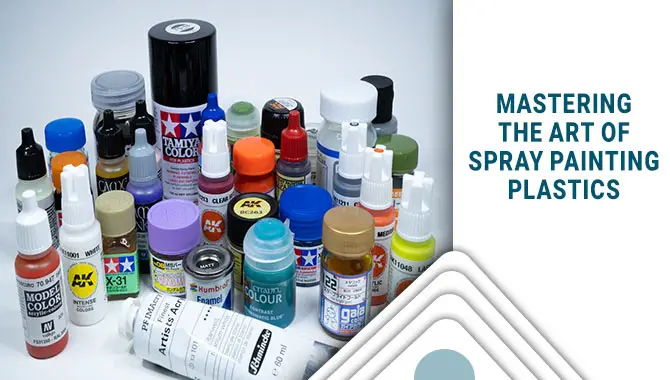
Top Tips For Mastering The Art Of Spray Painting Plastics Objects
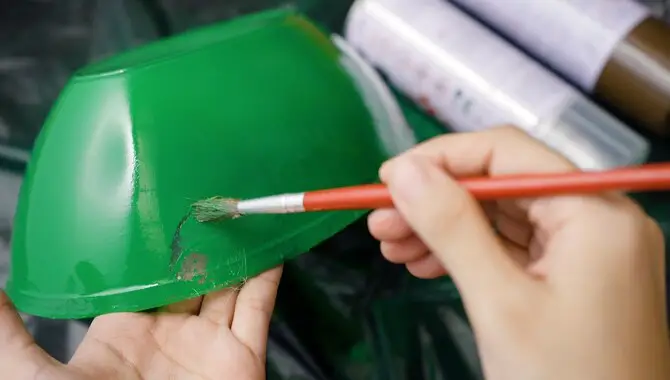
Spray painting plastic objects can be a fun and creative way to transform your home decor or DIY projects. However, it can be tricky to master the art of spray painting without leaving unsightly drips or uneven coverage. To help you achieve a flawless finish, here are some top tips for mastering the art of spray painting plastic objects by stape by stape.
- Firstly, it’s essential to prepare your plastic surface properly before spraying. Clean the object thoroughly with warm soapy water and allow it to dry completely.
- Then, lightly sand the surface to create a rough texture to help the paint adhere more effectively.
- Next, choose a high-quality spray paint designed specifically for use on plastics. Shake the can well before use and test the spray on a small inconspicuous area to ensure the right colour and consistency.
Scroll down for details in steps on mastering the art of spray painting plastics.
1. Choosing The Right Type Of Spray Paint For Your Plastic Project
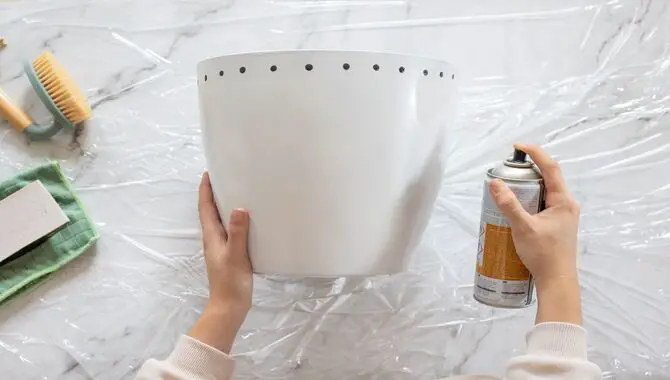
When looking to achieve the best possible results in mastering the art of spray painting plastic. Choosing the right spray paint is one of the most important factors to consider. It’s crucial to take into account the surface area and roughness of your plastic project because different surfaces require different effects.
For example, if you’re working on outdoor projects or murals with aerosol cans of spray paint or an airbrush gun. Rust-Oleum and Krylon brands tend to work well due to their durability and gloss finish. However, when using white paint for street art or stencil, work on plaster walls or cardboard poster board provided by masking tape and tarping off their surroundings may be a good idea.
When choosing your primer and basecoat, ensure they’re compatible with water- or oil-based paints. Such as MTN-94 acrylics & MTN Hardcore Spray Paints, which street artists prefer around the world as they allow for consistent coats without drips while also giving works of art a high-quality feel that lasts for years.
2. Applying Primer And Basecoat To Plastic
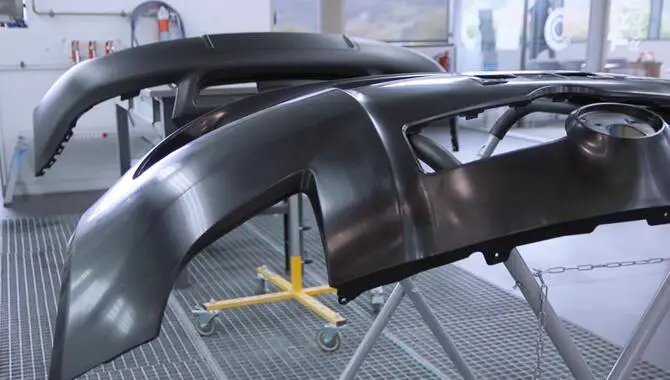
For achieving a smooth finish when applying primer and basecoat to your plastic project. Selecting the appropriate types of primer and basecoat is essential based on the type of plastic you’re painting on. Proper surface preparation is required to ensure adhesion and durability.
Avoid drips and bubbles by applying thin, even coats of primer while allowing sufficient drying time between each coating. Use light sweeping motions while applying the basecoat to achieve an even finish with a gloss or matte effect.
3. Using Cardboard As A Painting Backdrop Fo Plastic
Using cardboard as a backdrop for a clean and organized work area when spray painting plastic is a great idea. Cardboard also provides a smooth surface for painting and prevents overspray from ruining your workspace. Before applying the base coat, make sure to use a plastic-specific primer that properly adheres to the surface area. To avoid any drips or imperfections on the surface of your artwork. Use light and even strokes while spraying the paint.
4. Using Stencils For Spray Painting Plastic
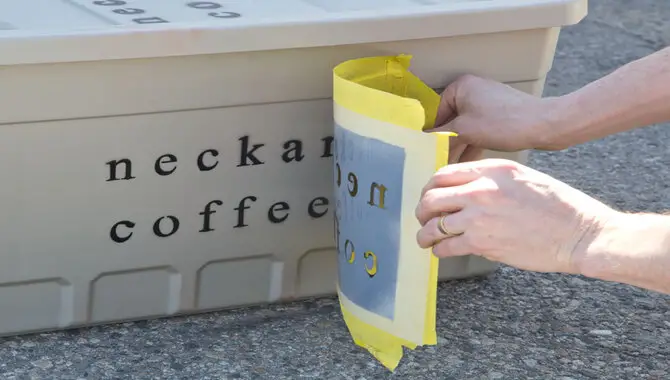
When it comes to spray painting plastic, using stencils can be a highly effective method for achieving precise and professional-looking results. Stencils are essentially pre-cut designs or patterns that can be used to create various shapes and images when spray-painted onto a plastic surface. One of the main advantages of using stencils for spray painting plastic is their level of control.
Using a stencil, you can ensure that your design is consistent and accurate without worrying about messy or uneven lines. Stencils also allow for faster and more efficient work, as you can quickly move from one section of the plastic to another without having to worry about precision or mistakes.
When selecting stencils for spray painting plastic, choose designs that are appropriate for your project. And will complement the overall aesthetic is important. It is also important to ensure that the stencils are cut precisely and that they are completely flat and smooth before using them.
5. Creating Murals With Spray Paint On Plastic
For achieving professional results when creating murals with spray paint on plastic, several factors must be taken into consideration. Begin by preparing the surface area by sanding and cleaning thoroughly. Afterwards, apply a plastic-specific primer such as Rust-Oleum or Krylon spray paint primer for better adhesion and durability.
Followed by a basecoat that complements your artwork using water-based acrylics or oil-based paints for lasting results. To create intricate designs, use different effects such as sponge painting or plaster textures with MTN or Rustoleum aerosol spray paints. Using an airbrush or graffiti nozzle for street art murals can yield excellent results. Apply several coats of sealant or gloss finish for added durability.
Beginner Tips For Spray Painting Plastic
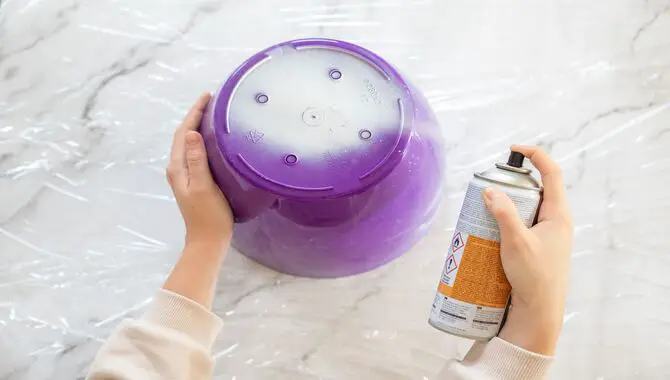
For those new to the world of spray painting plastics, there are a few crucial tips worth keeping in mind for the best possible results. Prior to applying any primer or paint, it’s important to sand down the surface of the plastic for improved adhesion.
Always choose a high-quality plastic primer designed specifically for spray painting plastics, followed by a base coat that complements your chosen primer for optimal durability. When actually applying the paint itself, be sure to use thin and even layers to prevent drips from forming and ensure a smooth finish that will make your work of art pop.
Nozzle Tips For Spray Painting Plastic
When working with aerosol cans of spray paint, achieving the best possible results comes down to using the right tools and techniques. One of the most important factors in mastering the art of spray painting plastic is choosing the right nozzle size for your spray gun.
Whether you’re using an airbrush or a traditional aerosol can, selecting the proper size can make all the difference between amateurish flaking and professional-looking artwork. Depending on your project, you may want to experiment with different-sized nozzles to achieve different effects.
Techniques For Achieving Professional Results When Spray Painting Plastic
For the best possible results when spray painting plastic, it’s important to follow a few key steps. Begin by using a primer that is specifically designed for use on plastic surfaces such as Rust-Oleum or Krylon. After priming, apply thin layers of aerosol spray paint in light coats to avoid drips and ensure even coverage.
Allow each coat to dry fully before adding another layer. For beginners, using cardboard or poster board as a backdrop can be helpful in preventing overspray and avoiding unwanted drips. You can create stunning works of art on any surface by following these tips and experimenting with different types of spray paint, like acrylics or oil-based paints.
How To Fix Mistakes When Spray Painting Plastic
When spray painting plastics, everybody makes mistakes from time to time. Luckily, fixing these errors is easy with some help from fine-grit sandpaper and a bit of patience. If you’ve made a mistake while painting with spray paint or aerosol cans of spray paint, simply sand it away gently before reapplying the coating. In case you’re dealing with wet paint, wipe it off using a clean cloth or paper towel.
It’s also important to remember that applying a primer and basecoat on your plastic surface will ensure better adhesion and durability of your artwork. For best results, choose a primer that’s specifically designed for use on plastics and apply it in thin layers.
Conclusion
Spray painting plastics can be a fun and rewarding DIY project, but getting professional-looking results takes skill and patience. From choosing the right type of paint to cleaning and prepping your plastic objects, there are several tips and tricks that can help you master the art of spray painting. Whether you’re a beginner or an experienced DIY enthusiast. We’ve got you covered with our expert tips for spray painting plastics.
Whether you’re looking to refresh an old plastic item or customize a new one, mastering the art of spray painting plastics can save you time and money. Remember to take your time, follow the instructions carefully, and practice on small surfaces before tackling bigger projects. With perseverance and attention to detail, you’ll soon be creating stunning plastic masterpieces that will last for years to come.
Frequently Asked Questions
How Do You Spray Paint Plastic And Make It Look Good?
Clean the surface well and apply a plastic primer for a successful plastic spray paint job. Apply thin, even coats of paint, ensuring each coat dries before adding the next. Consider using a clear coat to protect the finish.
How Do You Paint Plastic Like A Pro?
Achieving a professional-looking paint job on plastic requires a proper preparation. This includes thoroughly cleaning the surface, sanding it, and applying a plastic-specific primer. Use light, even coats of spray paint and allow each coat to dry before applying the next. For added protection and shine, finish with a clear coat.
Can You Just Spray Paint Plastic?
Spray painting plastic is possible with proper preparation. Thoroughly clean and lightly sand the surface for better adhesion, use a plastic primer, and choose a high-quality spray paint made for plastics.
How Do You Spray Paint Plastic?
Before spray painting plastic, ensure it’s clean and dry. Use a primer that’s made for plastic surfaces and hold the spray can at a distance of 6-8 inches. Apply light, even coats, allowing each coat to dry before adding another layer.

I am passionate about writing blogs about bikes. I love riding my bike and love talking about it even more. My blog is the perfect place for anyone who loves biking as much as I do. Come check it out and learn some tips and tricks from me!